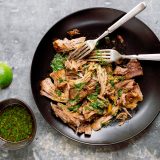A thick, well-marbled pork shoulder is the ideal candidate for low-and-slow cooking. It particularly shines in pernil asado, a classic Cuban dish in which the meat marinates overnight in salt, spices and sour orange juice before being roasted for several hours.
In many ways, this is a scaled-down lechon asado, which calls for a whole roasted pig. In either case, you get meltingly tender pork dressed in its own juices and a tangy mojo sauce of cumin, citrus and oregano.
It’s an impressive dish, but most home-friendly recipes are too fussy or time-consuming, calling for repeated basting and flipping, or fiddling with oven temperatures during a cook time of five hours or more. We wanted a more convenient pernil asado—something faster that didn’t call for basting or futzing around with temperature—that delivered the same succulent results.
As a starting point, we used a pernil asado recipe from J. Kenji Lopez-Alt. He roasts the pork covered in foil for part of the time. We liked it, but it took longer than we wanted and the recipe required basting and a temperature change midway through cooking. Could we speed it up and cut those steps?
Large pork roasts become meltingly tender at 190°F. But cooking often stalls for hours around 160°F. A hotter oven—combined with a loose wrap of foil—breaks through “the stall.”
We tried another recipe, one that left the meat uncovered at a consistent heat. It still required basting, and we hit a timing snag. Once the pork’s internal temperature hit about 160ºF—not nearly high enough for the tender results we wanted—it lingered there for hours. Five hours stretched to nine, and by the time the meat hit the proper temperature, its surface was leathery and dry.
We were puzzled. We turned to grilling expert Meathead Goldwyn to explain what was going on. Turns out, the evaporation rate of liquid in meat increases as it cooks, a process that cools the meat (much as sweating cools our bodies when we get hot). Trouble is, the meat sweats so much when its internal temperature is between 150ºF and 170ºF that the cooling effect interferes with cooking. This only changes when the surface runs out of moisture—and by then, the meat’s exterior is tough. Among barbecue enthusiasts, this is known as the stall.
For the connective tissue, or collagen, to melt in a pork roast, the meat’s temperature needs to hit at least 190ºF. That’s when the collagen rapidly converts to gelatin, which coats the meat, creating a moist, juicy texture. But if the roast’s exterior toughens, no amount of collagen, basting or sauce will mask it. We had to beat the stall, but without drying out the pork’s surface.
Since a low, dry heat didn’t work, we decided to try higher heat and more humidity. We figured a hotter oven could break the deadlock between cooling and cooking. And wrapping the meat in foil—a barbecue technique called the Texas crutch—could create a humid environment to mitigate evaporation (because the air around the meat would already be saturated with moisture).
So we ratcheted the oven up to 400ºF and wrapped the pork in foil for the entire time. That meant sacrificing a crackly crust, but we didn’t miss it. That was partly thanks to the flavorful mojo marinade—a mix of garlic, orange and lime juices, fresh oregano and cumin.
We boosted the pork’s tenderness by covering it with a mixture of salt and paprika hours before roasting. The mixture helped tenderize the meat. The salt denatures proteins on the surface of the meat, enabling them to better retain moisture.
When we wrapped the meat tightly in foil, it stewed and became mushy. So we formed a loose foil packet around the pork and elevated the shoulder inside the packet with a roasting rack. If the pork touched the foil, it produced a metallic taste and discolored the juices, so we lined the packet with kitchen parchment. It sounds like an origami project but was actually pretty simple, and the results were well worth it.
When we opened our foil packet after three and a half hours (all at the same temperature), the meat was practically falling off the bone and had remained tender from surface to center. Flavorful juices pooled in the foil-parchment packet; we combined those with orange and lime juices (to replicate the taste of sour Seville oranges) and fresh cilantro to make a mojo sauce. Tossing the shredded pork with the sauce ensured every bite had delicious, tangy flavor. The meat was wonderful in tacos or on salad, but we ate the shreds straight off the cutting board.
Making a foil-parchment packet to beat the stall
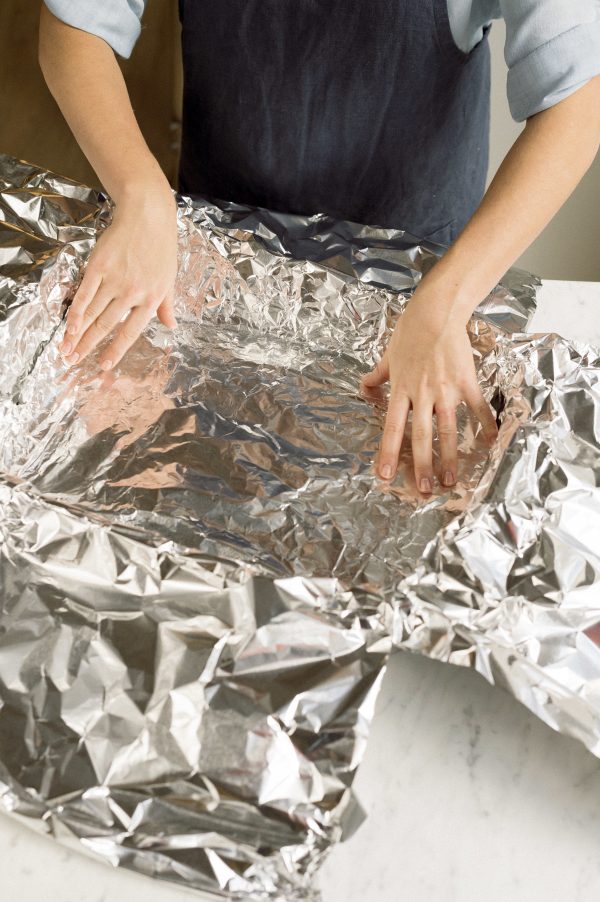
Make a foil sling by pressing one sheet of 18-inch-wide foil lengthwise into a roasting pan, leaving ample overhang. Repeat crosswise.
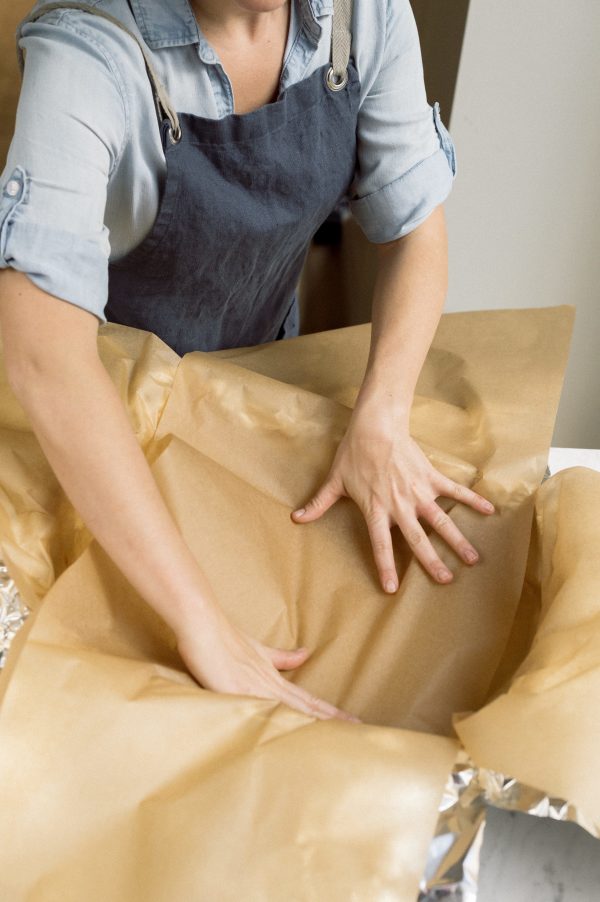
Using kitchen parchment, make a second sling, setting the sheets over the foil to ensure the foil does not come in contact with the meat.
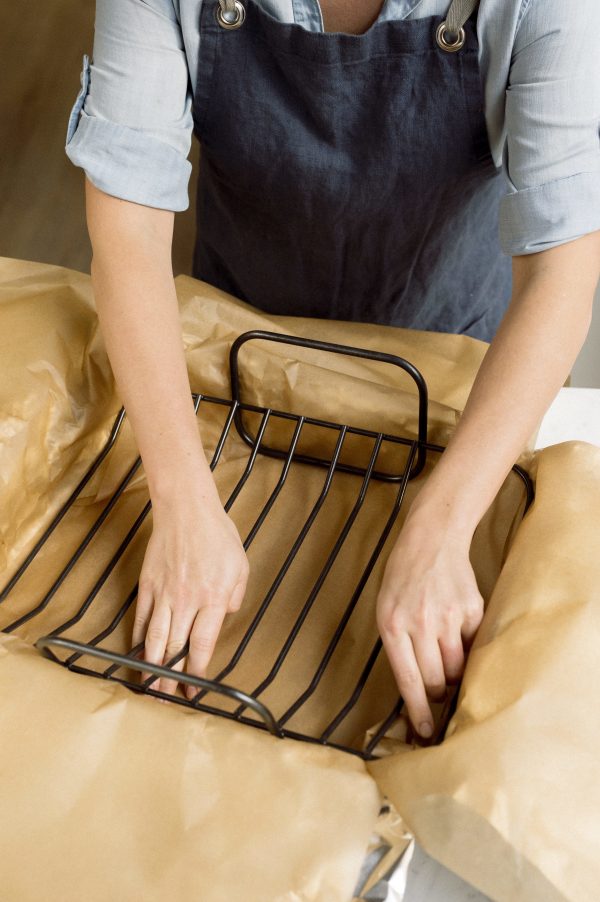
Set a wire roasting rack over the parchment. The rack elevates the meat, preventing it from stewing in its own juices, becoming mushy.
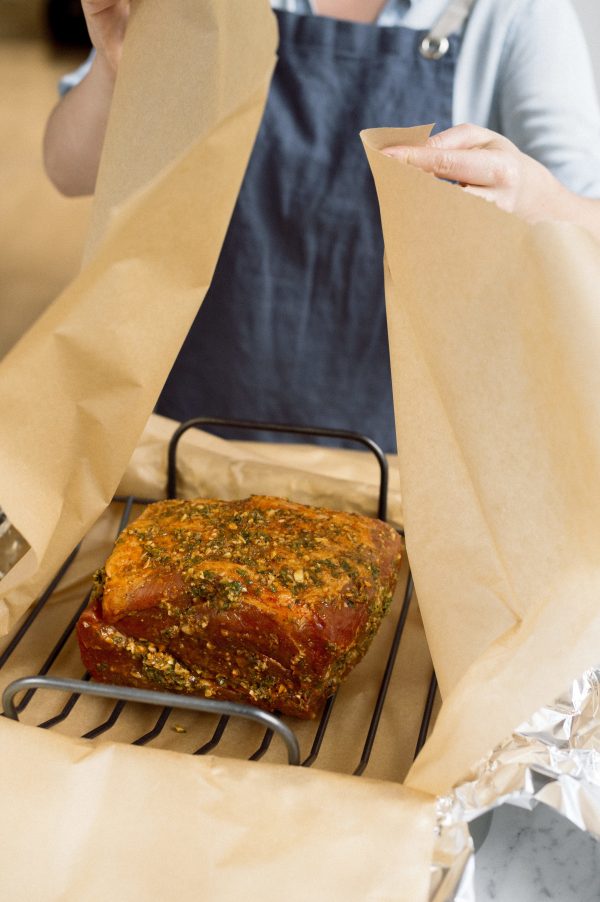
Place the pork fat side up on the rack. Loosely fold the excess parchment around the pork, gently patting down the parchment to cover the roast.
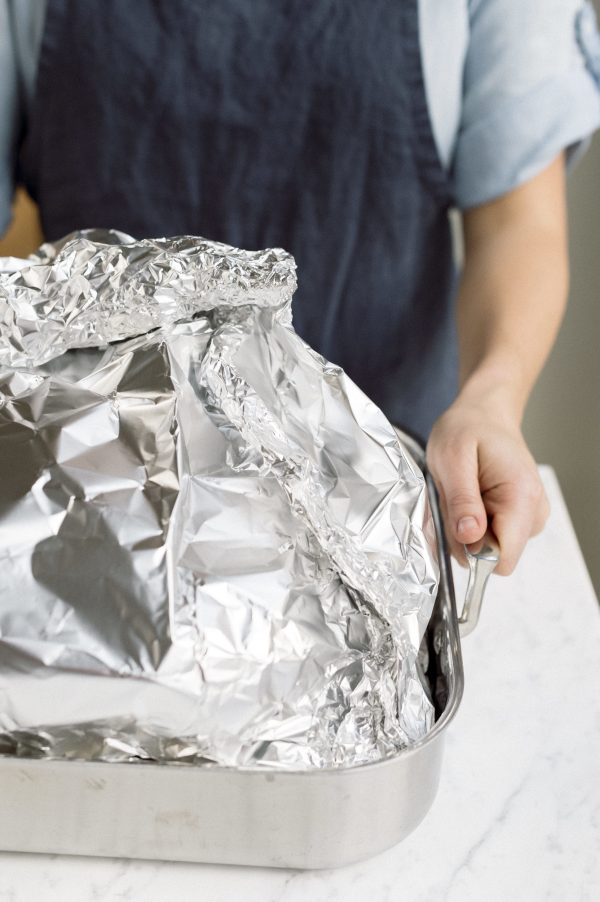
Fold the excess foil up and over the pork. Crimp the foil together to create a loose but sealed packet. Holes will cause the meat to dry out.
